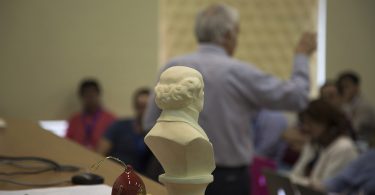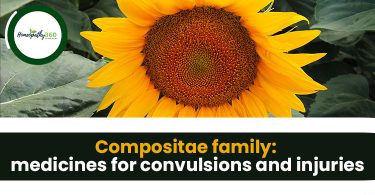
Abstract: Nephrolithiasis is a crystal concretion formed usually within the kidneys. It is an increasing urological disorder of human health, affecting about 12% of the world population. It has been associated with an increased risk of end-stage renal failure. The etiology of kidney stones is multifactorial. The most common type of kidney stone is calcium oxalate formed at Randall’s plaque on the renal papillary surfaces. The mechanism of stone formation is a complex process which results from several physicochemical events including supersaturation, nucleation, growth, aggregation and retention of urinary stone constituents within tubular cells. These steps are modulated by an imbalance between factors that promote or inhibit urinary crystallization. It is also noted that cellular injury promotes retention of particles on renal papillary surfaces. Whereas homoeopathic literature has mentioned many remedies for nephrolithiasis, still there is paucity of evidence-based studies. Case summary- The patient was treated with homoeopathic medicines -Berberis vulgaris Q. Follow-up imaging at 2 months showed complete resolution of the nephrolithiasis. This case report highlights the importance of homoeopathic mother tincture prescription as a promising complementary or alternative therapy.
KEYWORDS: Homoeopathy, Berberis Vulgaris , Nephrolithiasis.
Introduction: A kidney stone or renal calculi are other names of nephrolithiasis. According to reports, dietary and environmental factors play a part in the occurrence of various kidney stone types at varying rates, but inherited factors also play a big part. Nephrolithiasis are becoming more and more common throughout India but are especially prevalent in Gujarat, Rajasthan, Punjab and Madhya Pradesh. A urinary tract stone affects about 2% of the community on average, while the actual incidence and prevalence have not been determined. [1]
Nephrolithiasis is a severe, though not life-threatening condition that is present everywhere. Nephrolithiasis and urolithiasis are terms used in medical language to describe the condition of having urinary calculi, with “Lith” standing for “a stone or calculi.”[2] The prevalence of nephrolithiasis is increasing worldwide, and they can be quite painful with a variety of aetiologies and pathophysiologies. [3,4]
This is related to the rising prevalence of obese people, which is caused by poor food habits and a lack of physical activity. It is the result of a crystal or crystalline concretion traveling from the kidney through the genitourinary system. Kidney stones correlate with an increased risk of chronic kidney diseases, last-stage renal failure, cardiovascular diseases, diabetes, and hypertension.[5] Most patients suffer with nephrolithiasis form calcium stones (80%), most of which are composed primarily of calcium oxalate or calcium phosphate. A personal history of previous kidney stones raises the risk of kidney stones by 15% in the first year and 50% in the next ten years. A family history of kidney stones increases the risk by 2.5 times. Increased enteric oxalate absorption, which is usually owing to mal-absorption, leads to more calcium oxalate crystal formation. Urine tract infections cause struvite crystals by modifying urinary pH in the presence of urease-producing bacteria.[6] Low fluid consumption and history of diabetes, obesity, gout, and hypertension. [7,8]
Common symptoms associated with kidney stones, including a sharp pain radiating to the groin region, occur when the stone begins to descend from the kidneys into the ureters. It is often dull, colicky, sharp and severe pain. Pain is often associated with nausea and vomiting due to the severity of the pain.[6] These symptoms are attributed to peristalsis of the smooth muscle of the genito-urinary tract against the calculus. Haematuria is also frequently reported, due to lesion against the genito-urinary tract secondary to stone; this is confirmed by urine analysis. Non-contrast helical CT with 5 mm slices or fewer is ideal for individuals with suspected acute stone passage because it can accurately visualise the size and position of stones in the urinary system. A KUB can commonly see calcium-containing stones in the kidney or ureter, such as struvite stones, but uric acid or other purine stones, as well as cystine stones, can be radiolucent. Stones smaller than 5 mm in diameter normally pass on their own, but it may take several weeks of conservative management, whereas roughly half of stones bigger than 5 mm require urologic intervention for removal, and stones larger than 10 mm are extremely unlikely to pass on their own.[6] Several studies have shown that homoeopathic treatment is effective in cases of urolithiasis. The homoeopathic approach to the totality of symptoms has yielded considerable success in this field. [9,10]
CASE REPORT: A 47 years old female reported in our OPD on 22 April 2022 with the complaint of right nephrolithiasis for 5 months.
Presenting Complaints: Patient presented with tearing and cutting pain in the right lumbar region. The pain was irregular. Pain aggravates when lying down and ameliorated by pressure. She also had burning in urethra after passing urine.
History of Presenting Complaints: Patient had history of these complaints for 5 months. Complaints started with gradual pain in the lumbar region. But it gradually increased day by day. She took allopathic medication but got only temporary relief in pain for some time, but as soon as she stopped the treatment the pain reappeared.
GYNAE & OBS HISTORY
Her last menstrual period 2 months delay occurred on 17/02/2022 and had no associated complaints. Her menstrual cycle was regular, occurring for 4-5 days, every 26-28 days and without any abnormalities.
PAST HISTORY
H/O Jaundice at 14 years of age. She took allopathic treatment for this complaint and was cured.
FAMILY HISTORY
Father – 75 yrs old, Hypertensive and diabetes, alive
Mother –Died at age of 73 years due to asthma
Physical generals
Appetite- diminished appetite 1- 2 chapatis per meal once in a day ( only at dinner)
Thirst – decreased, 2-3 glasses/day.
Desire – sweets++
Stool – satisfactory once in a day, semi solid consistency
Urine – D 8-9; N-2-3, when passing urine pain radiates in the thigh and loins region.
Frequent urination and sensation as if some quantity of urine remains behind even after urination.
Perspiration – Scanty, generalized, non offensive, non-staining
Addiction – 6-7 cup of tea/day
Thermal reaction- chilly
Sleep/ dreams – 7-8 hrs sometimes disturbed due to pain, unrefreshing sleep
MENTAL GENERALS
Patient was mild and extroverted. Wants to company, Consolation amelioration. Secretive nature. She had a fear that some misfortune would happen to her. According to her husband she is always nervous and thinks about her complaints.
P/A EXAMINATION- Tenderness was present in rt. hypochondaric, right flank and right renal angle.on palpation
On the back Costovertebral angle tenderness is also present.
INVESTIGATION -USG of whole Abdomen on 18.04.2022 reported.
∙ 7 MM calculus is in middle calyx right kidney
Analysis & Evaluation of Symptoms
Pain in lumbar-region right side
Burning in urethra after urination
frequent urination
Bubbling sensation
Thirst – decreased, drinks at long intervals, small quantities of water.
Desire –sweets ++
Desire company
Consolation amelioration
Nervous and fearfulness about her complaint
Thermal – chilly
Prescription 22-04-2022
Rx
Berberis Vulgaris Q/TDS/15-15-15 Drops in ¼ cup of Normal Water
Rubrum 30 TDS X 14 Days
General Management:
- Drink plenty of fluid: 5-6 liter/day.
- Spinach, berries, chocolate, wheat bran, nuts, beets, tea should be limited.
- Avoid extra calcium supplements.
- Avoid high doses of vitamin C supplements
Table 1: follow up of the patient
| Date | Observation | Advise |
| 06/05/22 | Slight relief in pain in lumbar region Frequent urination present. Burning in urethra present | Rx Berb. Vulg. Q/ TDS/15-15-15 Drops in ¼ cup of warm water Rubrum 30 /TDS/ 15 Days |
| 20/05/22 | Slight relief in frequent urination Relief in pain in lumbar region No new symptoms appear Relief in urinary complaints | Rx Berb. Vulg.Q /TDS /15-15-15 drops in ¼ cup of warm water Rubrum . 30 /TDS / 15 days |
| 03/06/22 | Relief in pain No new symptoms appear Relief in urinary complaints she feels better now Advice – USG of whole abdomen | Rx Berb. Vulg. Q /TDS/ 15-15-15 Drops in ¼ cup of warm water Rubrum 30 /TDS /15 days |
| 17/06/22 | Relief in pain no new symptoms appear Stone was clear (expelled out) | Rx Berb. Vulg. Q /TDS / 15-15-15 Drops in ¼ cup of warm water Rubrum 30/TDS /15 days |
| 02/07/22 | Relief in all complaints no new symptoms appear | Rx Rubrum 30 /TDS / 15 day |
DISCUSSION & CONCLUSION
Homoeopathy is a simple system of medicine which treats the patient in holistic approach.[11] In homoeopathy we take detailed case taking and then an individualised drug is selected on the basis of symptom similarity. Berberis vulgaris helped as a ‘wash out’ remedy in expelling the renal stones. Sensation as if some urine remaining after urinating Pain in thighs and loins on urinating. Case presented with radiological evidence of nephrolithiasis noted in the right kidney. The patient was treated with homoeopathic mother tincture – Berberis Vulgaris Q. Follow-up imaging at 1 months showed complete resolution of the nephrolithiasis.[11] This case report promotes homoeopathic treatment as a possible complementary or alternative therapy, as well as emphasing the importance of homoeopathic mother tincture.
Reference:
1. Chug S.N., Text book of Medicine For MBBS. First Edition.VOL. 2. DELHI ARYA PUBLICATIONS. (2007)
2. Kansal Kamal, Kaushal Rakesh, Textbook of Practice of Medicine with homoeopathic Therapeutics. Third Revised and Enlarged Edition. NEW DELHI; B. Jain Publishers (P) Ltd. (2017)
3. Giannossi L., Summa V. A review of pathological biomineral analysis techniques and classification schemes. In: Aydinalp C., editor. An Introduction to the Study Mineralogy. In Tech, IMAA-CNR, Italy: In Tech Open; 2012. http://www.intechopen.com/books/
4. Soni, A.B., 1999. A comparative study of Pratisaraneeya Kshara in the management of Arshas. Ph.D. Thesis, Gujarat Ayurveda University, Jamnagar, India.
5. Poore W, Boyd CJ, Singh NP, Wood K, Gower B, Assimos DG. Obesity and its impact on kidney stone formation. Rev Urol. 2020;22(1):17–23.
6. Śliwa M, Piątkowska N, Kajzar M, Saran A, Jarzumbek A, Bień K, Kluczewska E, Lewek P. Diagnostyka obrazowa kamicy nerkowej. Gabinet Prywatny. 2022 May 27;29(02):36-42.
7. Lotan Y, Antonelli J, Jiménez IB, Gharbi H, Herring R, Beaver A, et al. The kidney stone and increased water intake trial in steel workers: results from a pilot study. Urolithiasis 2017;45(2):177–83.
8. Abate N, Chandalia M, Cabo-Chan AV Jr, Moe OW, Sakhaee K. The metabolic syndrome and uric acid nephrolithiasis: novel features of renal manifestation of insulin resistance. Kidney Int. 2004;65(2):386–92.
9. Gautam P. A case report of hyperuricaemia with nephrolithiasis treated with homoeopathy. Indian J Res Homoeopathy 2021;15:147-54.
10. Hati AK, Rath S, Nayak C, Raj I, Sahoo AR, Paital B. Successful treatment of ureteric calculi with constitutional homoeopathic medicine Lycopodium clavatum: A Case report. J Drug Deliv Ther. 2018;8(6):1–7.
11. Hahnemann S. Organon of medicine: Fifth and Sixth reprint edition. New Delhi, India: B Jain; 2006. p.15,156-158.
About the Author
Dr. Jagdish Thebar 1, Dr. Preeti Srivastav 2
1. Head of Department, Department of Practice of medicine, Swasthya Kalyan Homoeopathic Medical College & Research Centre, Sitapura, Jaipur, Rajasthan, India
2. M.D. (PGR), Department of Practice of Medicine, Swasthya Kalyan Homoeopathic Medical College & Research Centre, Sitapura, Jaipur, Rajasthan, India
Dr. Jagdish Thebar
Swasthya Kalyan Homoeopathic Medical College & Research Centre, Sitapura, Jaipur, Rajasthan, India





